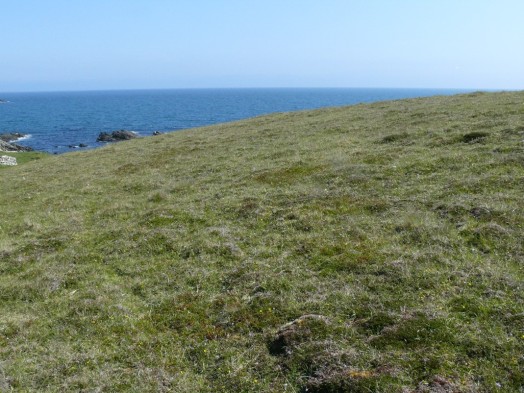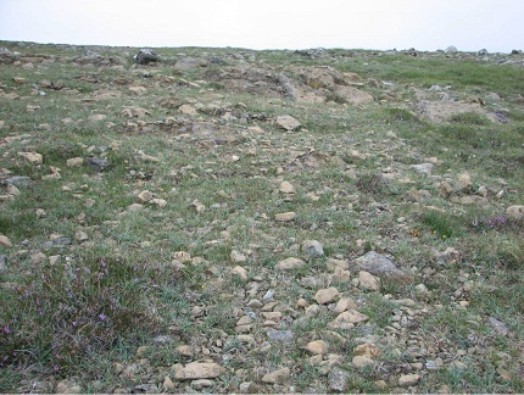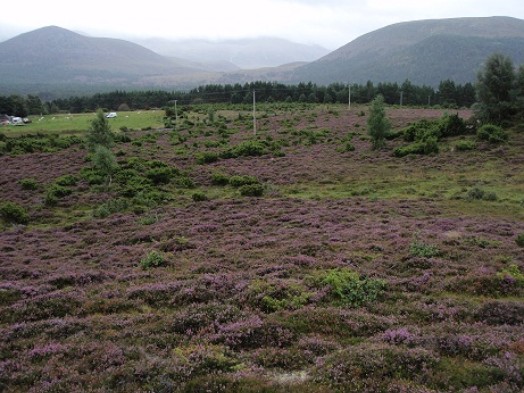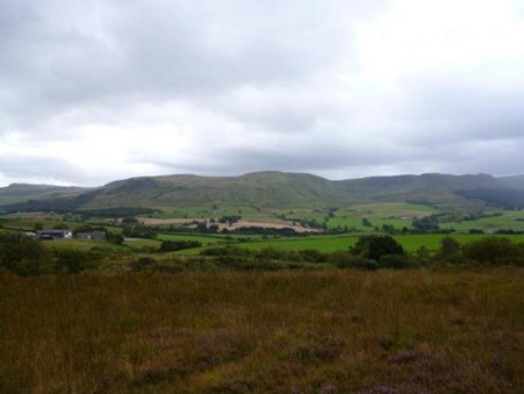Supporting guidance for Heath Management (Coastal, Serpentine, Lowland and Special Interest)
Date published: 13 November, 2023
For recent changes to this guidance, please see the bottom of the page.
Heath Management supports the management of several different types of heath, to make sure that their special plants and wildlife thrive.
The areas of these habitats can be quite small, and management needs to be tailored to the type of heath and the species present.
Heath types
Coastal Health

Coastal heath is a herb-rich form of heathland that occurs on mineral soils or thin peaty soils in exposed locations where the vegetation is strongly influenced by salt spray. Coastal Heath is mainly found in Orkney, Shetland, the north coast and some of the far Western Isles but rarely elsewhere on the mainland or other island locations. We strongly advise that you see advice from NatureScot at pre-application stage to check whether your site is eligible for this option.
The vegetation includes frequent species indicating maritime influence such as spring squill, sea plantain, thrift and sheep's-bit. Heather and other dwarf shrub growth is stunted or prostrate and can make up to c75% of the ground cover, but is often much less. The remaining vegetation has frequent small sedges and flowering plants such as wild thyme, birds-foot trefoil, kidney vetch and devil's bit scabious.
Further guidance on coastal heath identification.
Species-rich coastal grassland with a similar suite of species but lacking dwarf shrubs is also eligible for this option. On the north coast and on Orkney, coastal heath sites are where the rare Scottish primrose is found.
Consult NatureScot prior to applying if you require additional guidance on eligibility.
Coastal fields dominated by heath and rough grazing, with taller vegetation and little plant species diversity must be entered into the Moorland management option.
Serpentine Heath

Serpentine heath is found in a few locations where there are ultrabasic rocks. The vegetation includes species that can tolerate the chemical composition of the unusual soils derived from these rocks.
This habitat ranges from bare, stony soils with scattered plants to closed swards dominated by heath, grasses or flush species.
Species found include arctic sandwort, northern rock-cress and spring sandwort, along with special forms of other species which are tolerant of the soil conditions.
Consult NatureScot prior to applying if you require additional guidance on eligibility.
Special Interest Heath

Special interest heath is very rare restricted to some examples on designated sites or other heaths identified by NatureScot as being of particular importance often within a mosaic of other habitats.
They include some of the upland dry heaths that occur at low altitudes in Orkney, and unusual localised areas of species-rich upland heath.
They often occur in small, isolated fragments and require careful management. For example, here the needs of small uncommon plant species in the grassy patch on the right must be met along with those of the heath and juniper which are the dominant vegetation types.
Consult NatureScot prior to applying if you require additional guidance on eligibility.
Lowland Heath

Lowland heath is generally found at lower altitudes and nearly always enclosed by agricultural land, where the climate is mild. Usually these heaths are isolated remnants of a formerly more extensive habitat, now within a wider landscape of more intensively used land. They are relatively rare in Scotland.
Heather and other dwarf shrubs usually form between 25-90% of the vegetation.
Grasses and herbs are often more prominent than in upland heaths, lichens and mosses can be important, and some gorse, bracken or scattered tree cover is often present.
Wader management on heath mosaics
Land which was previously managed under an agri-environment scheme as habitat mosaic, to benefit waders, but which no longer meets the eligibility requirements, due to having more than c25% heath/bog habitat, can be entered into this management option instead. To be eligible, the land must be a mosaic, containing a minimum of two of the following habitat types:
1. improved and unimproved grassland
2. heath communities
3. blanket bog
4. wetland
In addition, the land must be within the target area for the Wader Grazed Grassland option and you must stipulate which waders your plan will benefit, and tailor grazing to suit the species requirements. Further information can be found in the:
Wader grazed grassland supporting guidance
Areas previously managed under the Moorland Management option in an agri-environment scheme should continue to be claimed as moorland.
For any new sites, which have never been in an agri-environment scheme, please note that this option is designed for heath mosaics typically found in the transition area between in-bye and hill ground. Larger expanses of ground dominated by bog and heath and upland sites should be entered under the Moorland Management option. If you are unsure of your land eligibility, please speak to RPID or NatureScot prior to submitting your application.
What needs to be done?
Coastal heath and serpentine heath
The aim of the standard prescription given in the option is to create a balance between the cover of the dwarf shrubs and fine grasses with broad-leaved herbs.
To achieve this:
- grazing should be limited in summer in order to allow plants to flower and set seed
- late summer/autumn grazing is needed to reduce rank growth
- reduced grazing pressure or no grazing from November to March is required to preserve the heath habitat
On grass-dominated sites, if ground and vegetation conditions allow, there may be limited grazing over winter, but take care to ensure that dwarf shrubs such as heather are not too heavily grazed at this time.
If there is a grazing regime more suited to biodiversity objectives on the site or to the current condition of the vegetation than the standard prescription, a grazing plan may be agreed, but must be justified for habitat enhancement reasons. Continuous grazing, year round is not supported under this option.
For special interest heath, the aim of the standard prescription is the same as for coastal heath and serpentine heath. Here, however, the interest can be varied, and in most cases a grazing plan tailored to the biodiversity requirements of the site will be needed.
For example:
- there may be small herb species present which require some light summer grazing to ensure that they are not shaded out by vigorous grasses
- autumn / winter grazing might need to be avoided in order to promote growth or recovery of dwarf-shrubs
- a variable grazing regime responsive to change in vegetation condition may be required
Lowland heath
The aim of the standard prescription is to create good vegetation structure to maintain diversity across the habitat, ensuring that the condition of the dwarf-shrub heath is maintained.
This is achieved by:
- grazing in summer to ensure that grasses, which are more palatable and available then, are grazed more than the dwarf shrubs
- allowing some flexibility over spring grazing, to allow early growth to be grazed on suitable sites, and autumn grazing, which may be required to reduce rank growth
- excluding livestock November to February to preserve heath habitat which could easily become damaged by grazing when ground conditions are wettest.
If you want to graze in spring and autumn, seasonal growth and ground conditions need to be taken into account.
If a different management regime is more suited to biodiversity objectives for the site or to the current condition of the vegetation, a plan that reflects these objectives may be agreed, but must be justified for habitat enhancement reasons. Continuous grazing, year round is not supported under this option.
Management can include rotational cutting or burning to maintain or enhance heath condition. You may cut or burn heath in addition to, or as an alternative to grazing (for example, where suitable stock is not available).
If lowland heath is not properly managed, heather becomes old and rank, and scrub and trees colonise the heath.
Dwarf shrubs can start to die out under a cover of trees and scrub, the condition of the heath declines, and eventually the heath can be lost. However, this process can be stopped by a programme of tree and scrub removal, heather management, and appropriate grazing.
You may be able to use capital items to support such a programme.
Wader management on heath mosaics
The grazing regime listed under the option requirements MUST be followed. This restricts grazing levels between 15 March and 15 June to protect ground nesting birds. In addition, no grazing is permitted between 1 November and the end of February to prevent poaching and damage to the habitats. For the remainder of the year, grazing levels should be appropriate to address the condition and structure of the sward, the combination of habitats on the site and waders which are being targeted.
For all heath types
- it is common for these heath types, especially coastal and serpentine heath, to occupy only part of a field. For example, serpentine heath may only be found on rocky outcrops within a field of unimproved grassland. Here, the management which is beneficial to the heath will have to be applied to the whole field, and therefore the whole field can be entered into the option
- 'rough grazings' may include areas which are not grazed by livestock or used agriculturally, for example special interest heath may be grazed by deer
- bracken, scrub or trees should not be allowed to expand on the site unless there is a specific justification for it, and it may be necessary to take steps to control them
- you should not apply fertiliser, slurry or farmyard manure
- you should not apply pesticides or herbicides except with prior agreement for activities such as spot treatment of scheduled weeds or non-native invasive species
